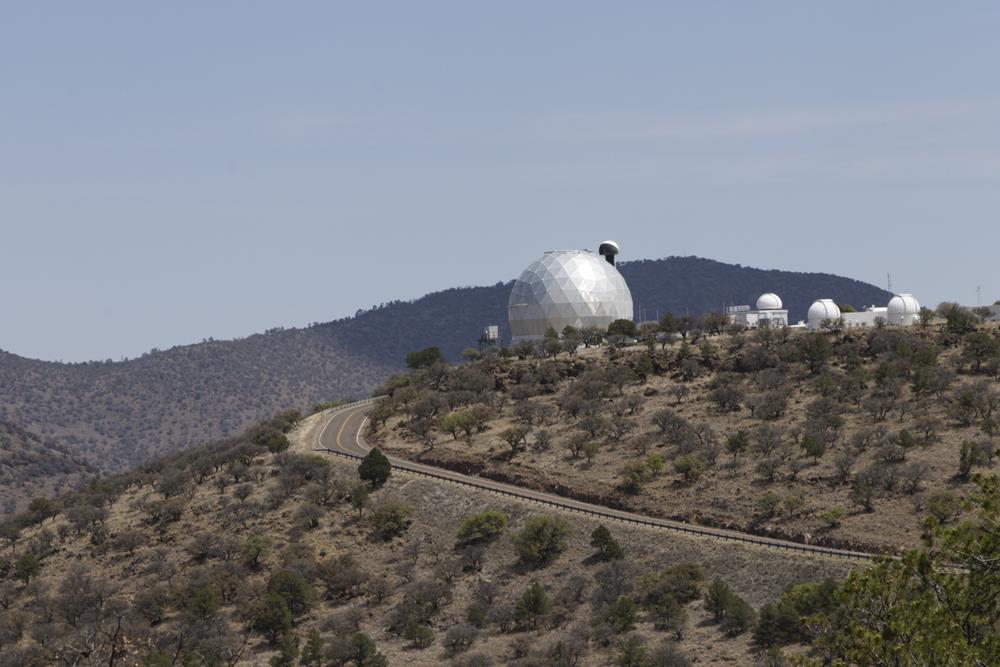Best Texas Outdoor Sites for Nature Science Exploration

Texas offers exceptional outdoor laboratories for science exploration. You'll find dark-sky astronomy and high-elevation ecology in the Davis Mountains (peaks above 6,700 ft), water-science opportunities at Inks Lake's constant-level reservoir, and rare desert wetlands at Balmorhea.
Many sites provide TEKS-aligned lessons, field activities, and ranger-led programs. For formal research that handles wildlife or disturbs natural resources, you'll need a Scientific Research Permit from Texas Parks & Wildlife. These natural classrooms await your discoveries.
Davis Mountains: Dark Skies & Desert Ecology Laboratory
Nestled in remote West Texas, the McDonald Observatory anchors both an astronomical treasure and a living Chihuahuan Desert laboratory. The observatory complex spans hundreds of acres near elevations over 6,700 feet, where world-class telescopes operate alongside sky-island woodlands and montane grasslands.
The region sits within the Greater Big Bend International Dark Sky Reserve, one of the world's largest cross-border dark-sky protected areas. Decades of local lighting ordinances and modern dark-sky standards safeguard wildlife behavior and night research—benefiting everything from migrating birds to newly documented firefly populations.
Visitors can explore the Frank N. Bash Visitor Center, join solar and Star Party programs, and learn how restoration efforts like Operation Ponderosa are rebuilding high-country forests and monitoring drought impacts. The pairing of pristine skies with diverse habitats makes this an unparalleled science destination.
Inks Lake: Water Science & Hill Country Geological Wonders
Set in the rugged Texas Hill Country, Inks Lake is a constant-level reservoir of roughly 830 acres, created by the Roy B. Inks Dam on the Colorado River. Here, hydrology meets geology: you can study shoreline weathering of Llano Uplift granites, observe riparian plant communities, and examine how flow management supports downstream ecosystems.
The LCRA conducts routine water-quality monitoring (including harmful algae surveillance) that provides real-world datasets for students. While Inks is held near constant level, occasional winter drawdowns on nearby Highland Lakes (more commonly Lakes LBJ and Marble Falls) reveal sediment patterns, habitat structure, and infrastructure needs.
Field days at the park let learners connect karst and crystalline bedrock, aquatic chemistry, and watershed stewardship in one compact setting.
Balmorhea's Desert Wetlands: Unique Ecosystems for Research
In stark contrast to the Hill Country, Balmorhea State Park shelters a rare ciénega—a desert wetland fed by the San Solomon Springs system. Artesian flow on the order of tens of millions of gallons per day sustains crystal-clear canals and pool habitats teeming with life.
This living laboratory supports the Comanche Springs pupfish and Pecos gambusia, conserved in spring runs and refuge canals that mimic their native habitats. Along cattail-lined margins, you can explore trophic webs where desert and aquatic ecosystems overlap, and discuss water rights, agriculture, and springflow variability in an arid climate.
Seasonal surveys here illuminate species recovery, groundwater-surface water connections, and the conservation of saline-wetland specialists such as the Pecos sunflower in suitable West Texas marshes.
Scientific Study Permits: How to Conduct Formal Research in Texas Parks
Planning to do formal research in a Texas state park? Projects that capture, handle, tag, collect, or otherwise disturb wildlife, plants, geology, cultural resources, or that deploy instruments (e.g., traps, sensors) require a Texas Parks & Wildlife Scientific Research Permit. Non-intrusive activities like casual photography or general observation typically do not require a permit, but always verify with the park.
Applications outline objectives, methods, locations, and timelines; review times vary by scope. Permits often run up to three years, with annual or end-of-permit reporting of results. Coordinate with the park superintendent before fieldwork to avoid conflicts with sensitive habitats or visitor use. (On private lands, written landowner permission is required in addition to any state or federal authorizations.)
Educational Resources & Ranger-Led Programs for Student Explorers
How can students turn parks into outdoor classrooms? Texas Parks & Wildlife offers TEKS-aligned curriculum, virtual and in-person ranger programs, and educator professional development. Loaner education trunks, field data sheets, and simple monitoring kits help classes investigate topics from water quality to pollinators.
You'll also find Junior Ranger activities, Arts-in-the-Parks journaling and photography prompts, and field trips co-led by Texas Master Naturalist volunteers. Many parks publish teacher guides with pre-/post-visit lessons, safety notes, and accessibility information. Whether you're logging macroinvertebrates, mapping vegetation, or practicing geoscience skills, these programs make inquiry-based STEM learning both hands-on and memorable.
Conclusion
Texas's diverse outdoor sites offer unmatched field laboratories—from dark-sky astronomy in the Davis Mountains to hydrology at Inks Lake and desert-wetland ecology at Balmorhea. Secure the right permits for formal studies, tap into ranger-led programming, and bring TEKS-aligned science to life. Your next breakthrough may be under the stars, along a granite shoreline, or beside a desert spring.



